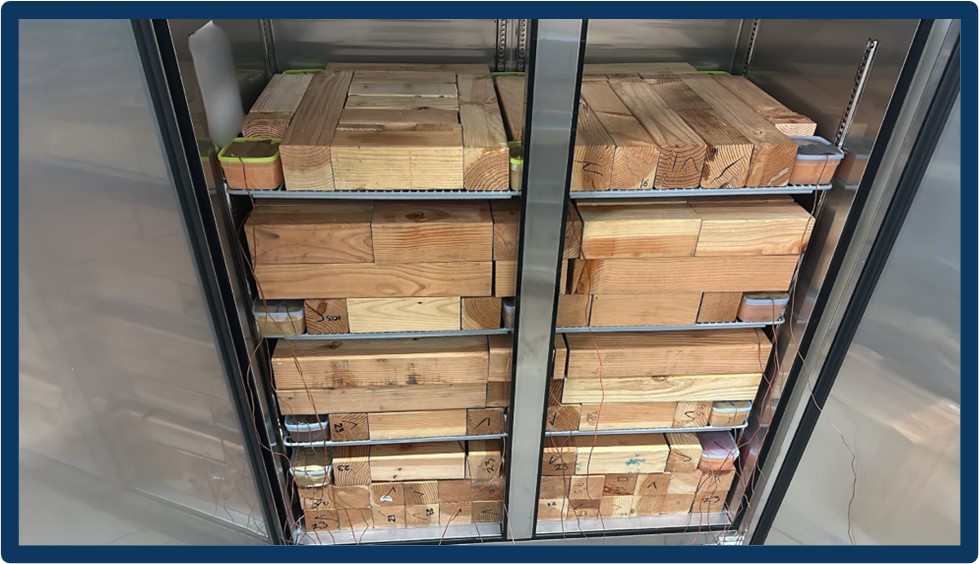 Project Title
Project Title
Daily Energy Consumption of Self-Contained Commercial Refrigeration Equipment
Project Number CR24PGE115 Organization PG&E End-use Plug Loads and Appliances, Process End-use Other Refrigeration, Food Service Sector Commercial Project Year(s) 2023 - 2024On October 10, 2023, the U.S. Department of Energy (DOE) published a Notice of Proposed Rulemaking (NOPR) and Technical Support Document (TSD) for Energy Conservation Standards for Commercial Refrigerators, Freezers, and Refrigerator-Freezers (CRE). To support DOE’s CRE standards rulemaking, the CA IOUs conducted testing at Intertek’s Columbus, Ohio, location to evaluate the energy use of vertical closed solid self-contained CRE (vertical CREs) and chef bases. Vertical CREs were tested to evaluate energy use relative to DOE’s proposed standards for this equipment class and to assess food safety concerns raised by several stakeholders. Chef bases were tested at 75°F and 86°F to evaluate the impact of increased ambient test temperatures on the equipment’s energy consumption.
The primary objectives of this study were the following:
- Evaluate Vertical CRE Energy Use: Assess energy use of the most efficient vertical CRE available in the U.S. market and address food safety concerns documented by several stakeholders during DOE’s rulemaking process for energy conservation standards.
- Evaluate Chef Base Energy Use: Analyze the energy use of popular chef base models, which are not currently required to meet an energy consumption standard.
- Quantify Ambient Temperature Impacts: Measure the increase in chef base energy use when ambient test temperature is increased from 75°F to 86°F.
Key findings from the study were the following:
- All six tested vertical freezers met DOE’s current daily energy consumption (DEC) standard and the current ENERGY STAR® specification for vertical freezers.
- All nine tested vertical coolers met DOE’s current DEC standard for vertical coolers, and seven units met the current ENERGY STAR specification.
- Tested energy consumption was not a function of price. For each equipment class, less expensive units performed as well as more expensive units.
- Three vertical freezers were tested under a modified NSF 7 test designed to more closely simulate temperature and door openings in hot kitchens (100°F). Two of the three freezers met the modified NSF 7 temperature criteria, maintaining an integrated average of all test simulator temperatures between -2°F and +2°F over the 24-hour test.
- Four vertical coolers were tested using the modified NSF 7 test. All four units met the modified NSF 7 temperature criteria with average temperatures less than 41°F across all sensors over the 24-hour test and with no test simulator temperatures greater than 43°F.
- Daily energy use under a modified NSF 7 test was approximately double that obtained under DOE test procedure conditions.
- Energy use for the one reported chef base freezer increased by 32% when the ambient temperature was increased from 75°F to 86°F.
- Energy consumption for the two reported chef base coolers rose by 33% and 50%, respectively, when the ambient temperature was increased from 75°F to 86°F.
To expand on this dataset and make more data publicly available for future rulemakings, the CA IOUs may conduct additional testing on the same or additional CRE units.
